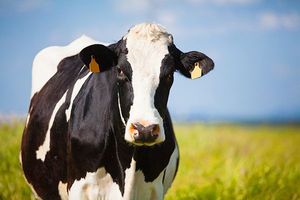Tips for Helping Cows Through Heat Stress
 Hotter-than-normal temperatures have impacted much of the U.S., exacerbating ongoing drought conditions to newly emerged crops. However, the hot weather also poses a danger to livestock. Dairy cattle begin to feel the effects of heat stress as soon as 72 degrees with 50% humidity. Ohio State University’s researchers say the U.S.’s economic loss from heat-stressed cattle can reach $1.6 billion each year. The University of Wisconsin reports the cost of heat stress at $74 per cow based on milk yield losses.
Hotter-than-normal temperatures have impacted much of the U.S., exacerbating ongoing drought conditions to newly emerged crops. However, the hot weather also poses a danger to livestock. Dairy cattle begin to feel the effects of heat stress as soon as 72 degrees with 50% humidity. Ohio State University’s researchers say the U.S.’s economic loss from heat-stressed cattle can reach $1.6 billion each year. The University of Wisconsin reports the cost of heat stress at $74 per cow based on milk yield losses.
How can producers measure heat stress? One way is to calculate the temperature-humidity index (THI). This averages the Fahrenheit temperature plus humidity percent divided by two. As a cow’s core body temperature climbs, fertility suffers and maintenance requirements rise. Cows weather heat through panting, rapid breathing, and standing, which exposes more body surface area for cooling. Dairy producers should look for drooling, leading to lower rumination and loss of saliva needed for rumen buffering and less lying time in freestalls.
To maintain nutrient requirements during hot weather, producers should consider these tips:
- Boost the diet’s palatability by feeding silages containing lactic and acetic acid or liquid molasses.
- Replace low-quality forages with higher neutral detergent fiber (NDF) digestibility, such as corn silage, lower lignin alfalfa, soy hulls, beet pulp, citrus pulp or corn gluten.
- Add fats and oils to contain higher levels of energy per pound.
- Balance rumen degradable protein (RDP) to avoid excess nitrogen.
Read more on the cost of heat-stressed cattle and tips for combatting production losses from University of Illinois Animal Science Professor Emeritus Michael Hutjen here.
